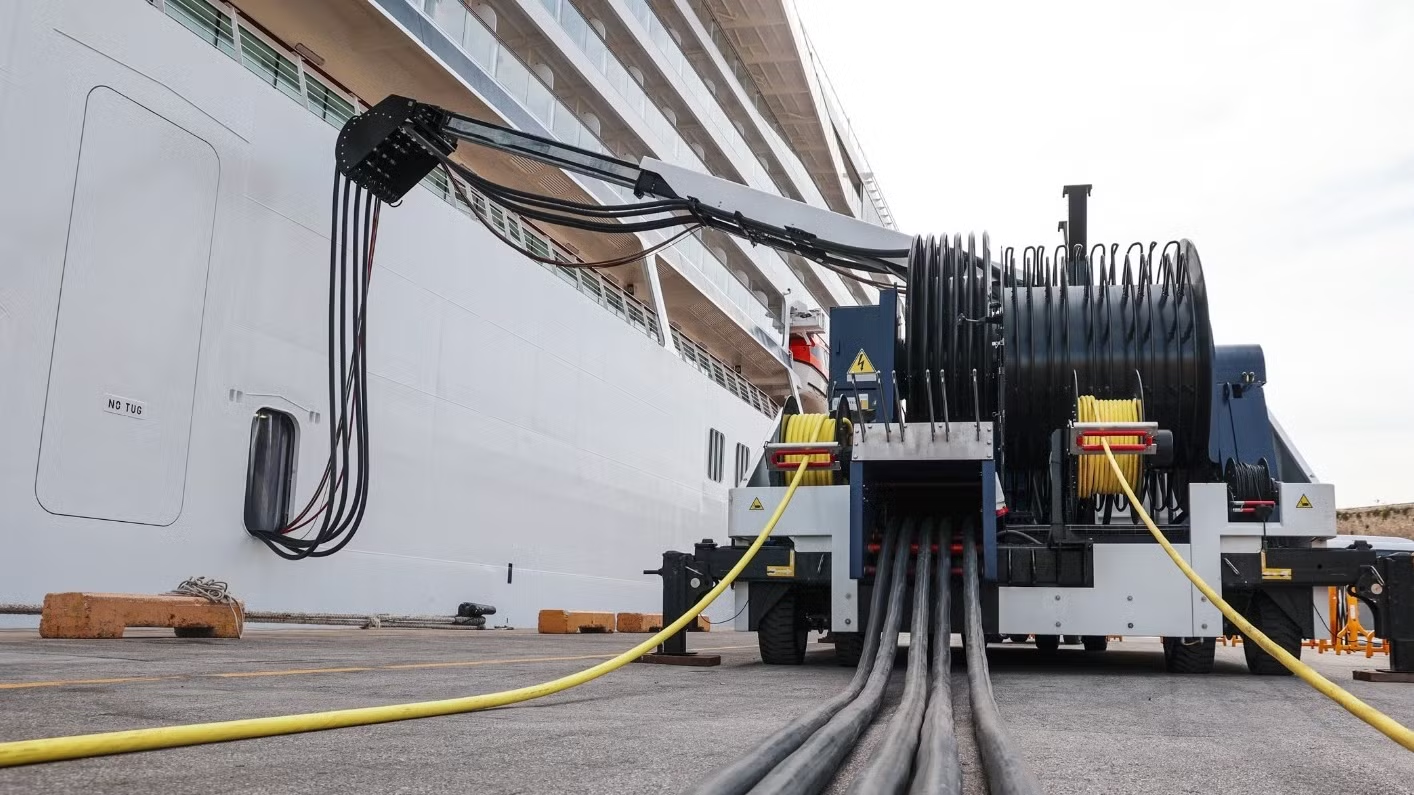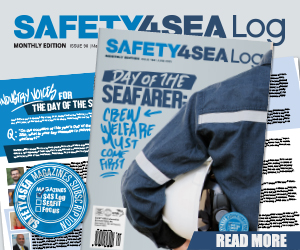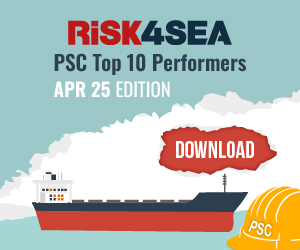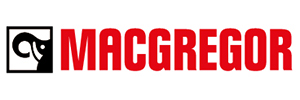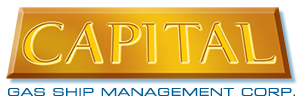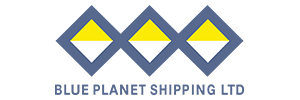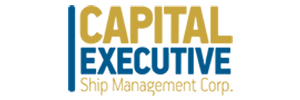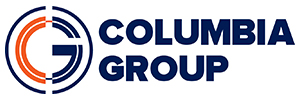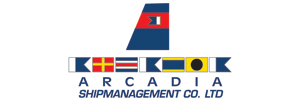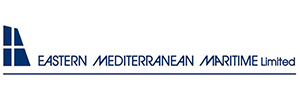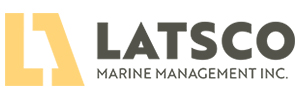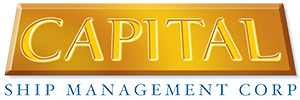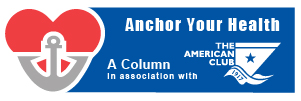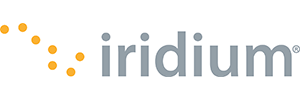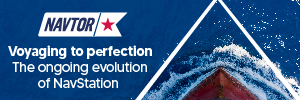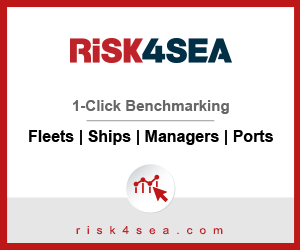Hafnia’s leaders, Mia Krogslund Jørgensen, VP, Head of People, Culture & Strategy, and Shivas Kapoor, GM, Head of Crewing, discuss their initiatives dedicated to advancing Diversity, Equity, and Inclusion (DEI) within the shipping industry.
Emphasizing the importance of supporting women pursuing careers at sea, they underscore the necessity for multifaceted efforts. For instance, providing women with comprehensive maternity benefits and enhancing on-board supplies, including medical care, sanitary facilities, and essential equipment tailored for female seafarers, is crucial. Furthermore, they stress the industry’s obligation to boost awareness and promotion of diverse career opportunities in shipping. Recognizing that many young individuals may be unaware of the extensive array of roles available, they argue that elevating the visibility of these career paths is paramount. By doing so, the industry can effectively highlight the stimulating and fulfilling aspects of working in shipping.
SAFETY4SEA: What are some of the major challenges faced by the maritime industry, and how is your organization addressing these challenges?
Like many other industries, the shipping industry is facing the strong need to help combat climate change. At the same time, a huge digital transformation and technology integration is taking place – all up against a volatile market, where fluctuations in global economic conditions affecting supply and demand means shipowners are having to diversify their services, optimize their fleet and maintain financial resilience through strategic financial planning and future proofing of our business.
Hafnia is undergoing several measures to future proof our business and secure our position as a forward-thinking tanker company.
We have always had a strong focus on people, encouraging entrepreneurship, ownership, and a strong level of individual and team responsibility. We have focused on employee retention to make Hafnia an attractive place to work – to best equip us for the new maritime era we are in – as it’s only people who are going to help us navigate this. At Hafnia, we take great pride in our company culture, which promotes Diversity, Inclusion, Belonging and Equity (DIBE), championing a working environment that embraces differences.
This is no easy feat, given the current available talent pipeline, especially those at sea. In 2023 we launched an enhanced maternity leave policy for women seafarers and the Hafnia Culture lab, which sees four vessels crewed with at least 50% women for us to both learn and understand what is needed on our ships for women to feel more attracted to a career aboard.
In driving the business towards net zero by 2050, we are also proactively looking at optimizing our vessels’ performance and the synergies of our fleet in reduction of our carbon emissions. In 2023 we welcomed three out of four dual-fuel LNG vessels and announced our investment in four dual fuel methanol chemical MR newbuilds built out of GSI Shipyard, for delivery between 2025-2026.
Hafnia is also actively invested in a project (Clean Hydrogen Works (CHW)) to explore the development of a new, global-scale, clean hydrogen ammonia production and export project, which aims to capture up to 98 percent of CO2 emissions from its processes and will provide a cost-effective, scalable pathway to supply carbon-free energy. Production is estimated to begin in 2028, to which we also intend to order four VLAC’s to start transporting these vessels.
Working through some of these challenges is also going to require an industry collaborative approach, where we actively engage with peers and organizations to share best practice learnings and collectively propose tangible initiatives to address our common challenges. An example of this can be seen through our membership in the All Aboard Alliance (which our CEO Mikael Skov is co-chairing).
S4S: Has the industry been successful managing Human Factors onboard and ashore? What needs to change from your perspective?
Hafnia follows a people-first philosophy in which we engage with various strategies to ensure job satisfaction and confidence in the workplace. Although across a lot of measures, we are always on a self-improvement exercise to get better. In summary, while the maritime industry has made strides in managing human factors, ongoing efforts are needed to enhance training, technology adoption, mental health support, and overall safety culture to adapt to the evolving landscape and ensure a resilient and efficient maritime workforce.
We proactively put emphasis across:
- Training and education – continually looking at what training programs we use onshore and aboard, focusing on skills, safety procedures and emergency response. Because the maritime world is so dynamic, we always must remember to keep our methods of training updated. It is not the traditional “seminar” type format we have once known, and much more incorporates learning on the job, simulation, and interactive based learning (online, or drills etc.)
- Technology Transformation – is a term that is evermore so affecting the human factor. Across our vessels we are increasing the use of technology for navigation, communication, and monitoring systems. Changes we are now seeing is the integration of advanced technologies, that are possible through the rollout of the Starlink Satellite System or other technologies such as automation and artificial intelligence (hyperlink) to reduce the burden on crew members.
- Health – Awareness both onshore and at sea is increasing. Over the years we have offered enhanced services for seafarers via Wellness program and ISWAN which incorporates comprehensive physical, social and mental health programs, access to counselling and check-ins to address the unique challenges of a career at sea.
- Safety – Whilst safety culture has always actively been promoted, there are still cases which continue to occur which means there are issues in effective communication and practices. There still needs to be measures of continuing fostering an environment where reporting and addressing human factor-related concerns (like mistakes) are prioritized without fear of retribution.
- Diversity – As already mentioned, there needs to be a stronger emphasis on a diverse and inclusive maritime workforce that better recognizes the value of different perspectives and experiences.
S4S: How can we create the right mindset, engage our people, and reinforce the right behaviors for strengthening safety culture onboard tanker ships?
Leadership, communication, training, empowerment, recognition, and continuous improvement is key.
Culture aboard a vessel usually filtrates from the top. Senior officers must be able to demonstrate a strong commitment to safety, actively participating in safety initiatives, communicating effectively, and partaking in drills to set the tone for the crew.
When it comes to communication, it is vital there are channels in which crew can report safety concerns without fear of reprisal. Accompanying this, training and briefing is also key where safety briefings keeping seafarers informed about safety protocols, updates and procedures need to be proactively provided. At Hafnia, we look across incidences in the industry and circulate learnings to all our vessels to ensure we pre-emptively try to unfortunately avoid situations. Our crew also receive regular training on procedures, emergency response and the use of safety equipment. Drill exercises are also key when it comes to ensuring our crew are well-prepared to respond to crises effectively – which we actively do several times a year in our offices and aboard our vessels.
When an incident does occur – it is very important to follow through with a thorough investigation and analysis to identify areas for improvement.
- Empowerment and involvement: Engaging employees in safety initiatives and decision-making processes can foster a sense of ownership and empowerment. This involvement creates a sense of responsibility and encourages a proactive approach to safety.
- Recognition and rewards: Recognizing and rewarding safe behaviors and achievements can reinforce the right mindset and encourage a positive safety culture. Implementing a system that acknowledges and rewards individuals or teams for their commitment to safety can motivate others to follow suit.
- Continuous improvement: Safety culture should be a continuous journey of improvement. Regularly review safety procedures, conduct risk assessments, and seek feedback to identify areas for improvement. Actively address any identified gaps or concerns to ensure that safety remains a priority.
By implementing these strategies, shipping companies can create a strong safety culture. It requires a collective effort from leadership, crew members, and all stakeholders to foster a mindset that prioritizes safety and reinforces the right behaviors.
One of the largest risks on a tanker vessel, given the long periods of time a seafarer is out at sea, is mental health and well-being. The right mindset to be able to safely operate a tanker means our crew have continuous access to mental health support services and wellness programs. Several years ago, Hafnia launched the Hafnia Wellness program that focuses on physical, social, and mental well-being for a healthy and resilient crew!
In 2023, Hafnia also re reviewed all our policies aboard our vessels, reiterating our zero-tolerance approach for unsafe practices and compliance with safety rules.
S4S: How can industry stakeholders best collaborate in support of Diversity, Equity, and Inclusion (DEI)?
Coming together is key. We all share the same challenges. Aren’t multiple heads better than one? Even more we see collective organizations forming gathering industry stakeholders e.g., Getting to zero coalition, the All Aboard Alliance, The Diversity Study Group etc. The Diversity Study Group is a great example of an organization dedicated to diversity, equity, and inclusion (DEI) in the workplace across the global shipping and maritime sectors which brings members together. Within his platform, members can benefit from discussions, shared learnings, conference, best practices (formed by tangible data) which can help us implement meaningful initiatives. The All Aboard Alliance’s pilot Diversity@Sea is also a great example of industry collaboration – where 11 maritime companies (including Hafnia) are coming together to pilot a series of measures onboard that will contribute to making life at sea attractive and inclusive to all seafarers.
S4S: In your view, how will the industry’s workforce look like in 2030? What are the competing forces shaping the maritime world this decade?
It’s difficult to generalize what the workforce will look like in 2030. What we know for sure though is that we will need to have a skilled workforce that are enabled to navigate the automation and technology changes coming up. This will therefore have to be a highly digitized and connected workforce who also have a strong grasp on environmental regulations – especially when it comes to having an expertise in alternative fuels, green technologies etc. We also must keep into account the demographic changes. We have challenges to both stay on top of a strategy which attracts and retains younger talent, with an emphasis on creating an inclusive working environment and address concerns related to work-life balance. At the same time, we also have an aging workforce as the pension age continues to be on the rise – and we need to ensure workspaces are equipped for that – both onshore and at sea.
S4S: Despite various initiatives and collaboration, is there a need to address any crew welfare issues from a regulatory point of you?
The Maritime Labour Convention (MLC) addresses several crew welfare issues, although there are still some areas where regulatory intervention may be expected to further improve crew welfare. Here are a few examples:
- Mental health support: While the MLC recognizes the importance of seafarers’ mental well-being, there is a need for more specific regulations and guidelines on providing mental health support services on board ships. This includes access to trained mental health professionals, counseling services, and awareness programs to address the unique challenges faced by seafarers.
- Fatigue management: Although the MLC sets minimum rest hour requirements, there is a need for stricter regulations and enforcement mechanisms to prevent fatigue-related accidents and ensure that seafarers have sufficient rest periods. This can include measures such as electronic monitoring systems to track and manage fatigue levels.
- Crew change facilitation: The COVID-19 pandemic has highlighted challenges faced by seafarers in terms of crew changes and repatriation. Regulatory intervention is needed to establish protocols and guidelines to facilitate smooth crew changes, including visa facilitation, travel arrangements, and coordination between governments, shipping companies, and port authorities.
- Access to communication: While the MLC recognizes the importance of seafarers’ access to communication facilities, there is a need for regulations that ensure affordable and reliable internet and phone services on board ships. This can help seafarers stay connected with their families and support systems, reducing feelings of isolation, and improving their overall well-being.
These are just a few examples where regulatory intervention can further enhance crew welfare and address the evolving challenges faced by seafarers in the maritime industry.
S4S: Do you have any new projects/plans/ initiatives that you would like to share?
To promote DEI in shipping, in 2023 we announced the Hafnia Culture Lab, where we have crewed four of our vessels with a minimum 50% female seafarers on board vessels. Our intention by doing this is to share our success and learnings with the industry to promote gender diversity at sea. More on this is referenced above. Simultaneously, are also working towards developing a more sustainable infrastructure for women at sea – to make careers at sea more attractive for them by introducing enhanced maternity benefits, upgrading the supplies on board for what women actually need (medicines, sanitary care etc.), customized PPE – where we are currently designing and introducing a new two-piece (shirt and trouser type) boiler suits that are more comfortable and practical for women seafarers based on their needs and body types.
S4S: If you could change one thing that would have an either profound or immediate impact on making a career in shipping more attractive to young men and women (outside the industry), what this one thing would it be and why?
To make a career in shipping more attractive to young men and women outside the industry, we need to enhance the visibility and promotion of the diverse career opportunities available in shipping. Many young people may not be aware of the wide range of roles and opportunities within the shipping industry. By increasing the visibility and promotion of these career paths, we can showcase the exciting and rewarding aspects of working in shipping. Maritime is going through an important transition now, and it is important that we highlight the fact that new talents can be part of this exciting milestone, and that they have a unique opportunity in making an impact for the greater good of the world. One way to achieve this is through educational outreach programs. Collaborating with schools, colleges, and universities to provide information about the industry, its career prospects, and the skills required can help young people make informed decisions about their future. This can include career fairs, guest lectures, internships, and mentorship programs.
Additionally, leveraging digital platforms and social media can play a significant role in promoting careers in shipping. Creating engaging content, sharing success stories, and highlighting the industry’s impact on global trade and sustainability can capture the attention of young men and women and spark their interest in pursuing a career in shipping.
Furthermore, fostering diversity and inclusion within the industry can also make it more attractive to young people. By promoting a culture that values and embraces diversity, shipping companies can create an environment where individuals from all backgrounds feel welcome and empowered to pursue a career in the industry. Also, when we look at this from an onboard perspective, we know that many people are hesitant to pursue a career in shipping because they will be away from their loved ones for a long time. If there was a way to shift this narrative, we would. In tackling this, at Hafnia we are already trying to introduce shorter tenures on board vs. the industry norm, and innovative projects like project Hologram – where seafarers can have regular contact with their families in a more real-life, interactive setting. From a shore perspective, shipping competes with other industries like FMCG, Finance etc., which are more appealing to younger generations as more mainstream industries. To compete for top talent, Hafnia regularly looks outside of our competitive set, to benchmark our own work environment with those that sit outside of our industry.
S4S: What is your key message to industry stakeholders to foster a more inclusive future for shipping?
We have several. But would mostly say:
“Diversity drives innovation”. Without diversity, we would not be able to have different perspectives and generate new ideas.
“Be open to collaboration, even if it means working with your competitor”. It is simply not possible anymore to continue working in silos.
“Always be on a self-improvement exercise.” Just because you win today, doesn’t mean you will win tomorrow.
The views presented hereabove are only those of the author and do not necessarily reflect those of SAFETY4SEA and are for information sharing and discussion purposes only.

















